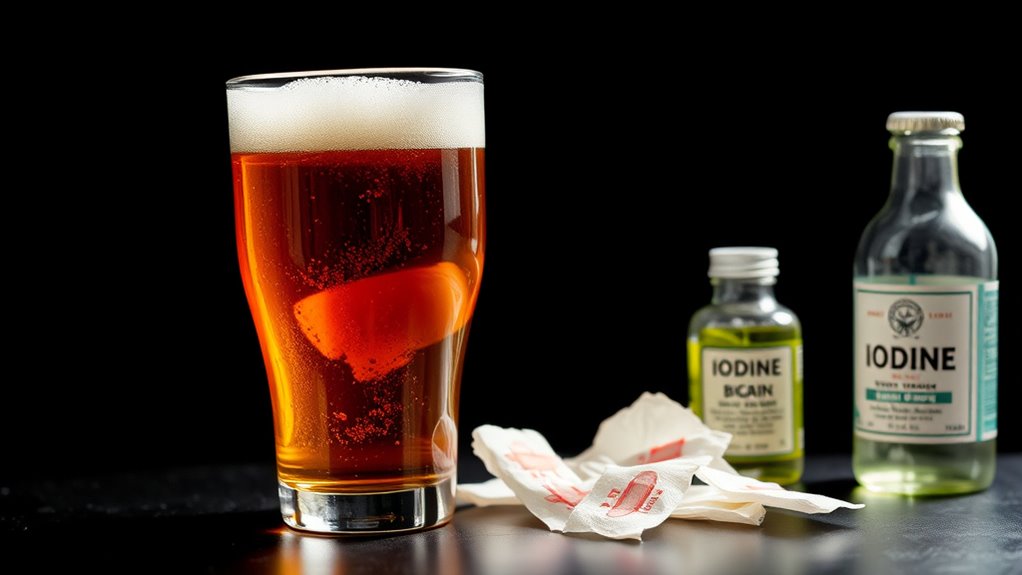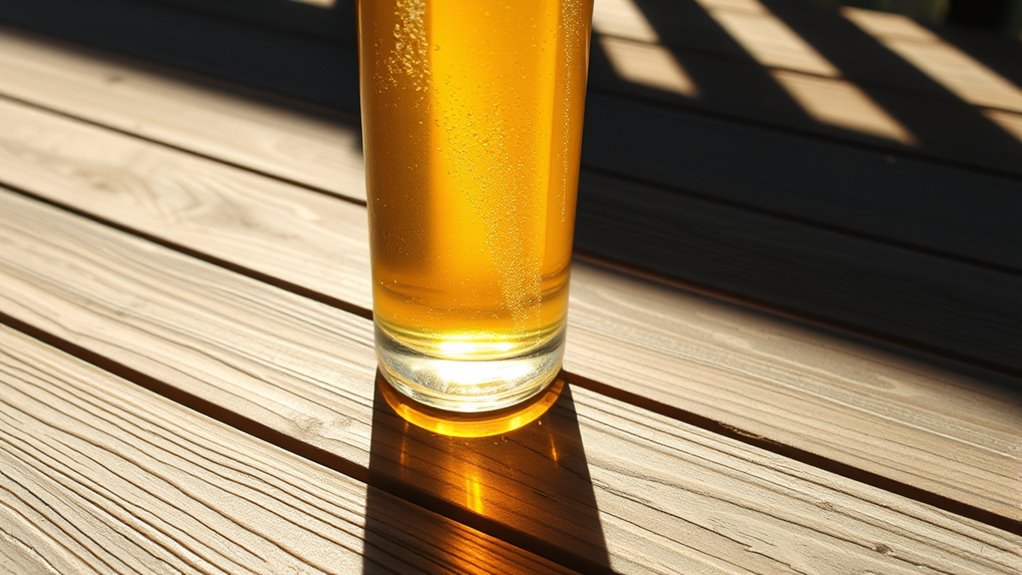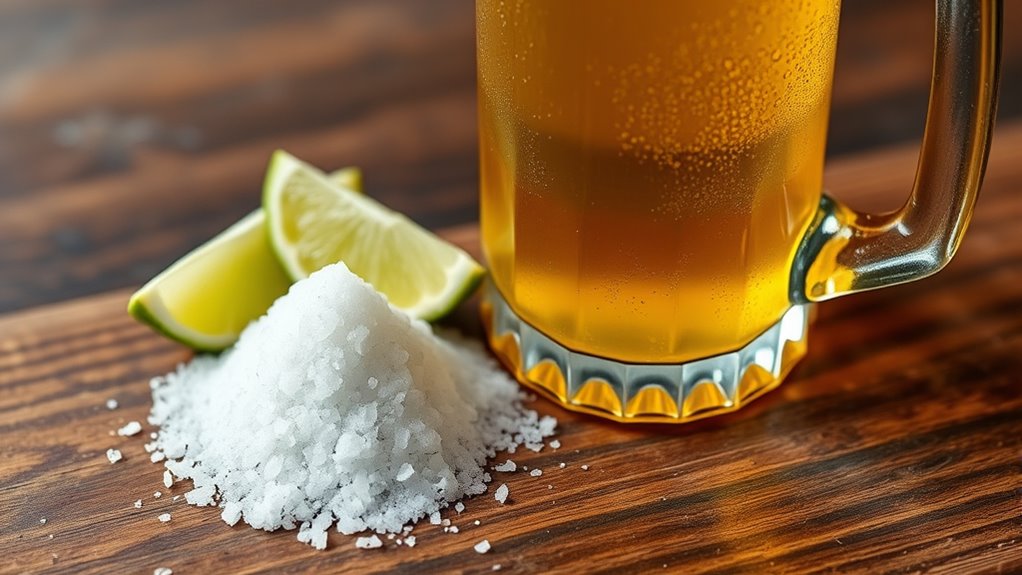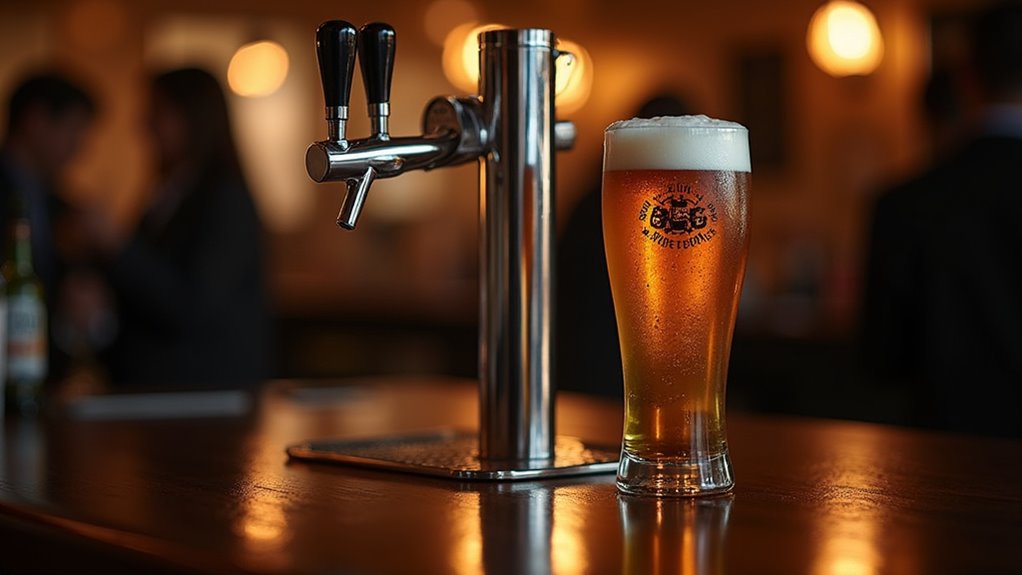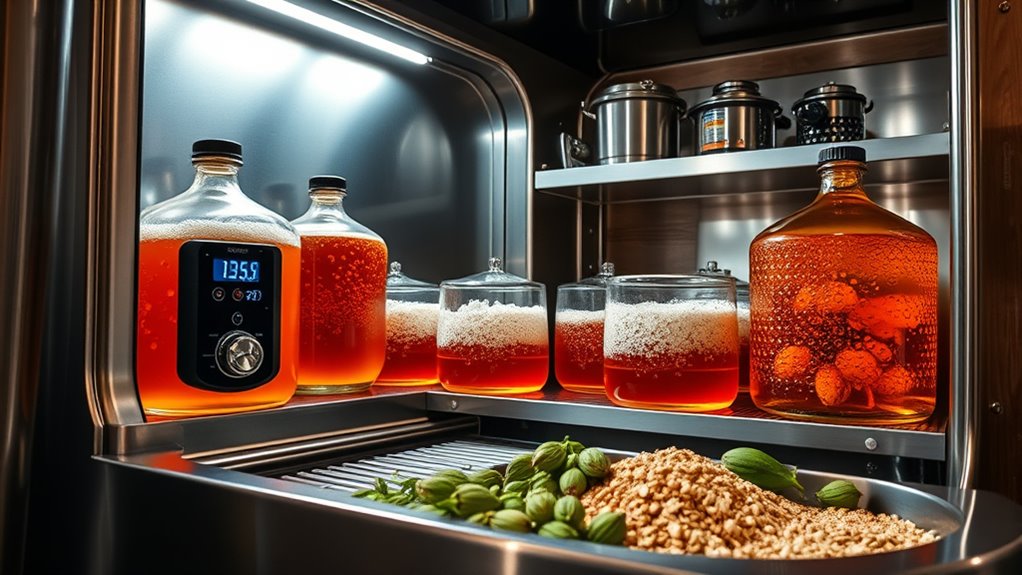To identify phenolic off-flavors in homebrew, pay attention to spicy, medicinal, or plastic-like aromas during tasting. These off-flavors often arise from wild yeast or chlorine interaction, so make certain to monitor your sanitation and ingredients. Clean equipment thoroughly with no-rinse sanitizers like Star San, and avoid bleach. Additionally, check your water quality for chlorine presence, as chlorophenols contribute to undesirable tastes. Following these guidelines will enhance your brewing process and improve beer quality, and further details await you.
At a Glance
- Identify phenolic off-flavors by recognizing spicy, medicinal, or plastic-like aromas in your homebrew.
- Monitor fermentation temperatures; excessive heat can intensify phenolic characteristics.
- Evaluate the cleanliness of your brewing equipment to prevent contamination and off-flavors.
- Check water quality; chlorine interactions can lead to unwanted chlorophenols if not treated.
- Taste for tannin bitterness, which can be mistaken for phenolic flavors due to poor sanitation.
Recognizing Phenolic Aromas in Beer
When brewing beer, being able to identify phenolic aromas is vital for guaranteeing a quality product.
Phenolic off-flavors can be spicy, medicinal, or plastic-like, often detected during sensory evaluation. These flavors mainly arise from wild yeast or the interaction between chlorine in brewing water and yeast-produced phenols.
Phenolic off-flavors can present as spicy, medicinal, or plastic-like, often linked to wild yeast or chlorine interactions.
Early detection is important, as once these flavors appear, they can’t be removed. To minimize risks, guarantee proper sanitation practices, including thorough cleaning to prevent wild yeast contamination, and avoiding chlorine-based cleaners.
Additionally, monitor your brewing water quality and be cautious with smoked malts, as they may also contribute to undesirable flavors.
Helpful Hints:
- Conduct regular sensory evaluations.
- Test your brewing water quality.
- Maintain strict sanitation practices.
Sources of Phenolic Off-Flavors
Understanding the sources of phenolic off-flavors is essential for any brewer aiming to improve their craft. Several factors contribute to these undesirable flavors:
- Certain yeast strains, like Brettanomyces, can create spicy or medicinal notes.
- Chlorophenols may develop from using chlorine-based cleaners, leading to unpleasant tastes.
- Smoked malts, such as beechwood or cherrywood, can introduce unexpected smokiness.
- Poor sanitation practices often result in excess tannins, which can create astringent flavors mistaken for phenolic off-flavors.
Impact of Water Quality on Phenolic Characteristics
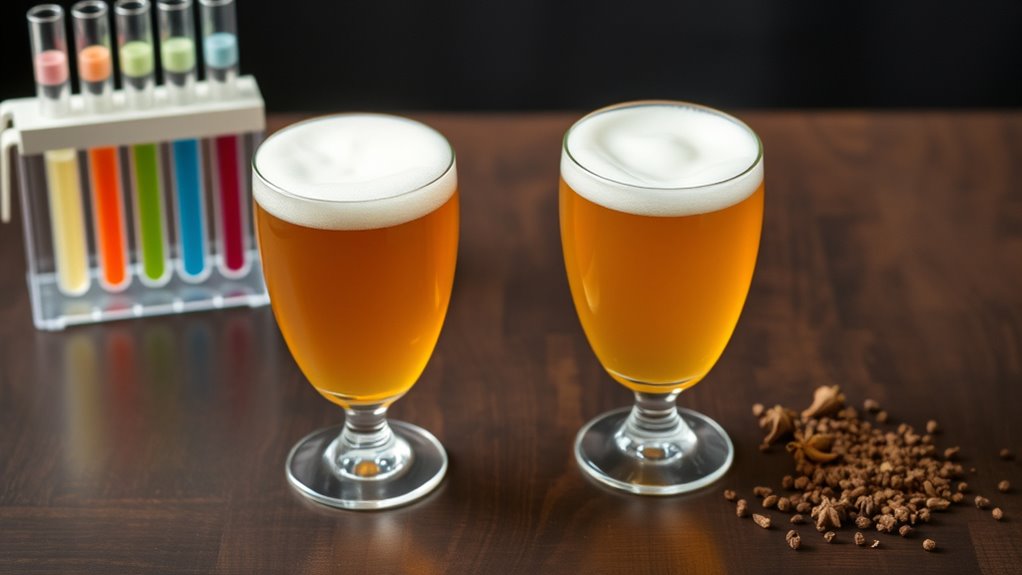
Water quality plays an essential role in shaping the phenolic characteristics of your homebrew, as contaminants or imbalances can lead to undesirable off-flavors.
Chlorophenols, which produce unpleasant plastic or medicinal tastes, form when chlorine or chloramine in brewing water interacts with yeast-generated phenols. To prevent this, consider using Campden tablets to remove chloramine from your brewing water.
Chlorophenols can create off-flavors in your brew; using Campden tablets helps eliminate chloramine for a cleaner taste.
Additionally, alternatives like Reverse Osmosis water or bottled spring water can considerably lower the risk of unwanted phenolic flavors. Monitoring and treating your brewing water quality is vital for ensuring a clean flavor profile in the final product.
Helpful Hints:
- Test your water regularly.
- Use Campden tablets when necessary.
- Explore different water sources.
Best Practices for Sanitizing Brewing Equipment
Sanitizing your brewing equipment is essential for preventing contamination and ensuring the quality of your homebrew.
Follow these best practices to keep your beer free from off-flavors like chlorophenol:
- Use no-rinse sanitizers, such as Star San or Iodophor.
- Never use bleach, as it can lead to undesirable off-flavors.
- Thoroughly clean all equipment before sanitizing to remove residues.
- Maintain separate tools for cleaning and sanitizing to minimize cross-contamination.
- Proper sanitization methods are critical in eliminating microbes that can spoil your beer.
Techniques for Flavor Mitigation in Homebrew
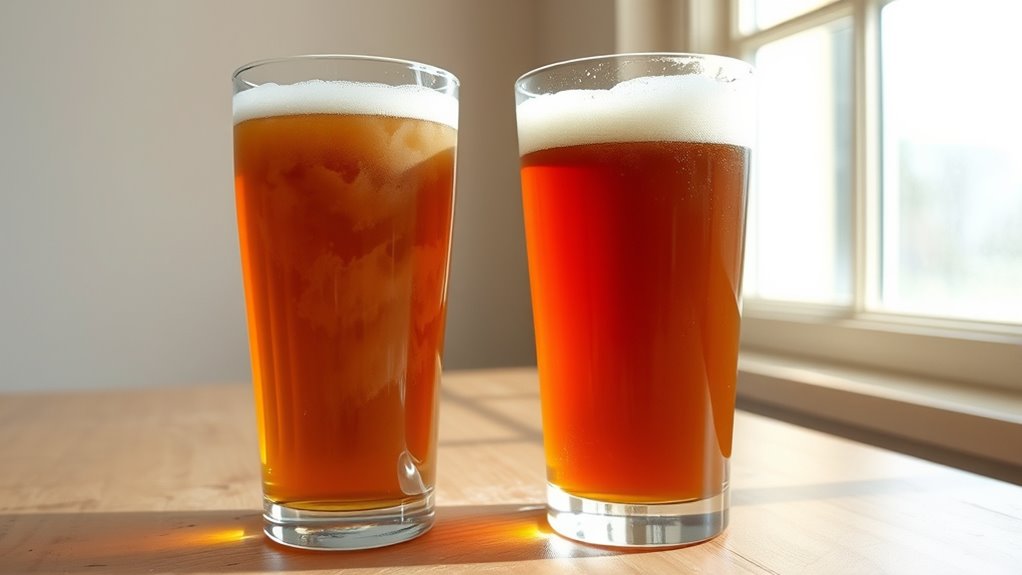
Homebrewing can be a rewarding hobby, but it comes with its challenges, especially when it comes to managing flavors. To mitigate phenolic flavors caused by poor brewing practices, consider these techniques:
- Use Campden tablets to treat brewing water, eliminating chloramine.
- Opt for no-rinse sanitizers like Star San to avoid bleach residues.
- Monitor fermentation temperatures closely, as hot alcohol can exacerbate off-flavors.
- Be cautious with smoked malts and select ingredients wisely.
- Control mash and sparge temperatures, avoiding water over 77°C (170°F) to limit tannin extraction.
- Ensure thorough cleaning followed by effective sanitizing with no-rinse sanitizers to eliminate bacteria that can spoil beer.
Implement these methods to enhance your homebrew quality.
